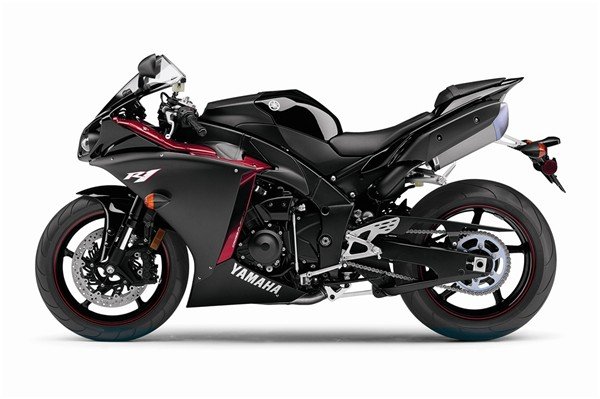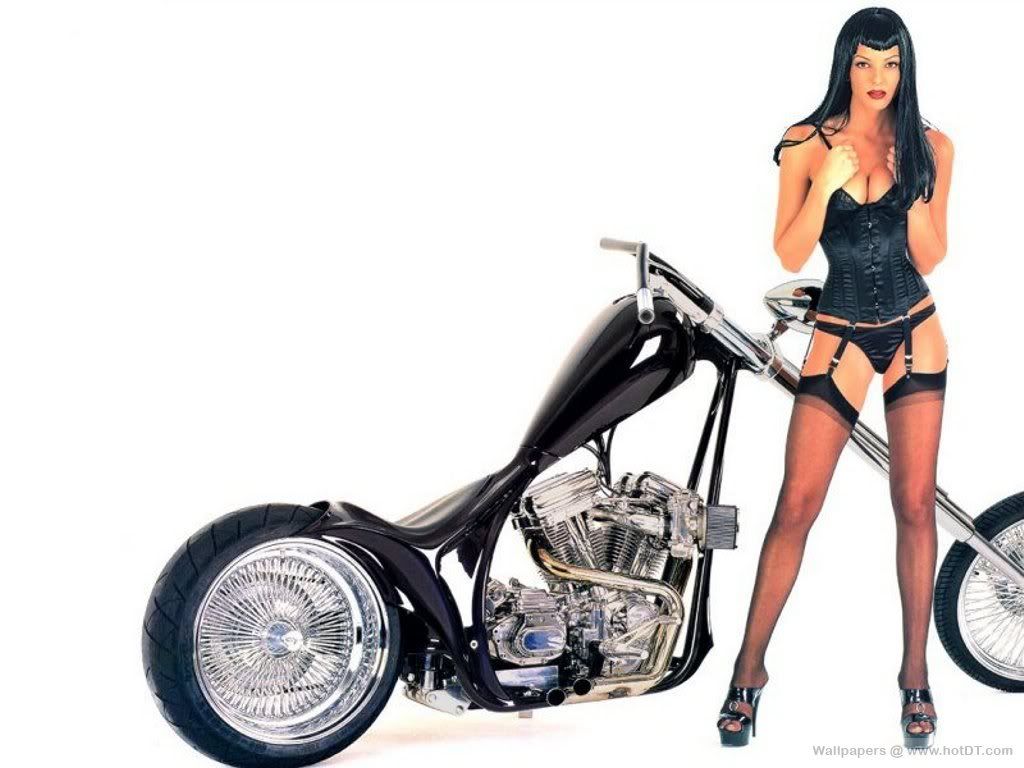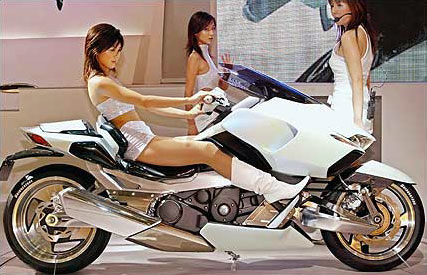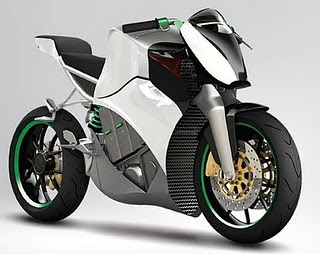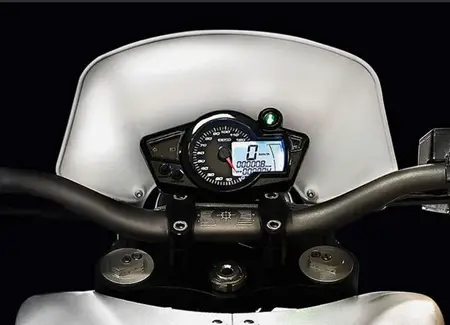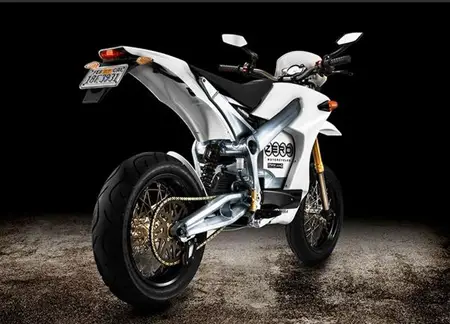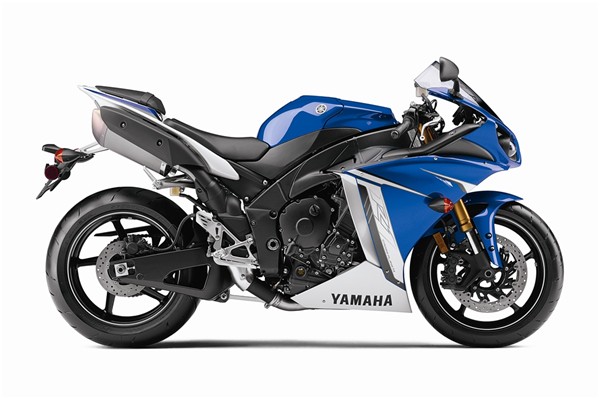|
|
|---|
Sunday, January 23, 2011
Labels: MOTORCYCLE FUTURISTIC CONCEPT
New Motorsport Modification | The Kobra Electric Motorcycle design concept
0 comments Posted by srikandi at 12:27 AMElectric motorcycles are accepted for their abridgement of address back it comes to styling, but one Italian artist has managed to appearance us altered back he came up with the Kobra project. The all-electric motorcycle abstraction by Cristiano Giuggioli is not alone a acceptable attractive zero-emission motorbike, but is additionally able to amuse every rider’s needs.
Saturday, January 22, 2011
The 2011 350 SXF is an all new bike from the ground up. It has a new 350cc engine, a new frame, fuel-injection, and new-to-KTM linkage rear-suspension! The bike also has electric start for those lazy and physically challenged riders out there. It also seems to have a spot to put a kick starter, but there isn’t one currently on the bike. It is said to be released to the public this summer (2010). The price may be high, but it will most likely be worth it for the amount of work KTM has put into this bike.
2011 KTM 350 SX-F Engine
Labels: 2011 KTM 350 SXF
Designed by aero-engineer and accomplished mountain-bike designer Neale Saiki, the Zeros feature aviation-grade lightweight aluminum frames weighing just 18 pounds in the roadgoing models, and 13 pounds in the off-road editions. Light wheels and suspension components, mostly sourced from Taiwan, help keep the overall mass down.
Labels: Motorcycles Zero S Electric
A champ on the alpha line. Fastest through the bends. The baron of all the tracks. You and your 2011 KTM 1190 RC8 R. Consistently focused on the advancing trip. The line? Burnt into your memory. Angle by bend. Beeline by straight. Nothing to abstract you. Here we go! Each and every day.
Full burke appear breeze - you'll become one with your RC8 R. The Brembo's chaw is cool absolute and the tyres alluringly hug the ambit of the band as your knee pads rub advance into the asphalt. Back on the throttle, a badly able torque, frequently no charge to change accessory – but consistently beneath control.
Engine type 2-cylinder, 4-stroke, V 75°
Displacement 1195 cc
Bore x stroke 105 x 69 mm (4.13 x 2.72")
Performance (homologated) 129 kW @ 10250 rpm
Max. torque 127 Nm @ 8000 rpm
Compression ratio 13.5:1
Starter/Battery Electric Starter/12 V 11.2 Ah
Transmission 6 gears, dog clutch engagement
Fuel Mixture Generation Keihin EFI (throttle body 52 mm (2.05"))
Control 4 V/DOHC
Lubrication Pressure lubrication with 3 Eaton pumps
Engine lubrication
Motorex, SAE 10W-50
Primary drive 40:76
Final drive 17:37
Cooling Liquid cooled
Clutch Wet multi-disc clutch, operated hydraulically
Motor Management Keihin EMS
Frame Chromium-Molybdenum trellis frame, powder-coated
Subframe Aluminium
Handlebar Aluminium stump handlebar
Front suspension WP-USD Ø 43 mm
Rear suspension WP-Monoshock
Suspension travel front/rear 120/120 mm (4.7 / 4.7")
Front brake 2 x Brembo four piston, radially bolted caliper, brake disc 320 mm (12.6")
Rear brake Brembo two piston, fixed caliper, brake disc 220 mm (8.66")
Rims, front/rear Cast aluminium wheels 3.50 x 17''; 6.00 x 17''
Tires, front/rear 120/70 ZR 17; 190/55 ZR 17
Chain X-ring 5/8 x 5/16"
Main silencer Stainless steel underfloor silencer with regulated catalytic converter
Steering head angle 66.7°
Trail 97 mm (3.82")
Wheel base 1425 mm (56.10")
Ground clearance (unloaded) 110 mm (4.33")
Seat height 805/825 mm (31.69/32.48")
Tank capacity approx. 16.5 liters/3.5 liters reserve (4.36/0.92 gal)
Weight (no fuel) approx. 184 kg (without fuel)
Displacement 1195 cc
Bore x stroke 105 x 69 mm (4.13 x 2.72")
Performance (homologated) 129 kW @ 10250 rpm
Max. torque 127 Nm @ 8000 rpm
Compression ratio 13.5:1
Starter/Battery Electric Starter/12 V 11.2 Ah
Transmission 6 gears, dog clutch engagement
Fuel Mixture Generation Keihin EFI (throttle body 52 mm (2.05"))
Control 4 V/DOHC
Lubrication Pressure lubrication with 3 Eaton pumps
Engine lubrication
Motorex, SAE 10W-50
Primary drive 40:76
Final drive 17:37
Cooling Liquid cooled
Clutch Wet multi-disc clutch, operated hydraulically
Motor Management Keihin EMS
Frame Chromium-Molybdenum trellis frame, powder-coated
Subframe Aluminium
Handlebar Aluminium stump handlebar
Front suspension WP-USD Ø 43 mm
Rear suspension WP-Monoshock
Suspension travel front/rear 120/120 mm (4.7 / 4.7")
Front brake 2 x Brembo four piston, radially bolted caliper, brake disc 320 mm (12.6")
Rear brake Brembo two piston, fixed caliper, brake disc 220 mm (8.66")
Rims, front/rear Cast aluminium wheels 3.50 x 17''; 6.00 x 17''
Tires, front/rear 120/70 ZR 17; 190/55 ZR 17
Chain X-ring 5/8 x 5/16"
Main silencer Stainless steel underfloor silencer with regulated catalytic converter
Steering head angle 66.7°
Trail 97 mm (3.82")
Wheel base 1425 mm (56.10")
Ground clearance (unloaded) 110 mm (4.33")
Seat height 805/825 mm (31.69/32.48")
Tank capacity approx. 16.5 liters/3.5 liters reserve (4.36/0.92 gal)
Weight (no fuel) approx. 184 kg (without fuel)
Labels: 2011 KTM 1190 RC8R Sportbike
Labels: 2011 Aprilia RS4 125 Sportbike
Labels: 2011 Aprilia Tuono V4R Sportbike
Sunday, January 16, 2011
One of the few bits of good news in the motorcycle industry these past few years, at least in America, is that many of the too-cool-for-the-States Euro-only models have finally dropped anchor and headed to the New World. The U.S. gets one such ride, Yamaha’s FZ8, as a 2011 model.just got a first taste of the new Fazer on a 100-mile run in California’s Santa Monica Mountains, discovering a fun-to-ride and versatile new middleweight.
The FZ8 expands what Yamaha dubs its Total Sportbike line, a designation applying to the high-performance Supersport R1 and R6, as well as the Sport-Touring FJR1300. In between are models Yamaha designates as its Sport models: the fully-faired FZ6R, half-faired FZ1 and the naked FZ8.
(MIC), Yamaha claims the Total Sportbike segment of the industry has held steady from 2005 thru 2010 at 20% (cruisers maintain the top position at 45-50% of sales). Within the Total Sportbike category itself, however, the Supersport segment has dropped from 65% to 49% over that six-year stretch. Picking up the slack, the remaining Sport models are up from 29% to 37%, with Sport-Touring bikes more than doubled from 6% to 14%.
Other market indicators deemed favorable for the FZ8 include a growing trend of riders no longer purchasing multiple specialist bikes, but instead investing in a single, more versatile mount. Add in Yamaha’s own customer feedback, which put Rider Position and Price/Deal as their most important purchasing reasons, and Yamaha makes a strong case for its new naked standard.
The FZ8 sources a familiar looking Inline Four, which shares the pre-crossplane R1 pedigree of its larger-displacement FZ1 sibling. The engine cases are in fact identical with FZ1, along with the 53.6mm stroke. But the FZ8 displaces 779cc courtesy of its sleeved down 68mm bore (77mm on FZ1). The FZ8 mill further diverges with a new four-valve cylinder head (five-valve head on FZ1) and higher 12.0:1 compression ratio. Mellower cam profiles and revised valve timing tune the FZ8 for low and mid-range power, rather than the top-end bias of the FZ1, the latter bike also sporting a 500 rpm higher redline at 12K.
Variable length intake funnels further refine the engine’s power characteristics. No, it’s not the movable YCC-I system from the R1, rather the outside cylinders are 125mm long, while the middle two cylinders route air from the 7.8-liter airbox through 150mm length funnels. Other internal changes include a narrower throttle bore than the FZ1. The other major change from the FZ1 mill is a lighter crankshaft, with Yamaha claiming a 30% reduction in inertial mass. While giving the engine a quick revving character and smooth throttle response, the company touts the crank’s the reduced rotational force “contributes to light and responsive handling.”
Well-suited to a bike pitched as a step-up model, the engine’s broad powerband has something for all skill levels. The low end churns out ample, yet manageable power, complemented by a forgiving throttle input. Approaching 6K on the tach and a fantastic mid-range zing kicks in. Squeeze the throttle between 6 and 9K and riders had best have firm grip on the controls, because it hauls. Fueling across the powerband is immediate without being abrupt, a very tricky formula to master. The engine’s smooth character holds throughout the revs as well, with no rattling or overt vibes until it buzzes up near the 11.5K redline.
Yamaha refuses to state power claims for this model, but our seat-of-the-pants dyno would confirm its middleweight displacement. It’s got more oomph than a 600 street bike, but lacks the potency of the FZ1 or 1043cc Kawasaki Z1000. In fact, the engine performance it’s most analogous in our estimation to the defunct-in-the-US Kawi Z750, which we fondly recall from many a riding season past.
A 4-2-1 exhaust system exits out a black, right-side muffler. We found the exhaust sound muted but favorable, with a more robust melody wailing at the upper revs. Keeping it revved out doesn’t help with fuel economy though, and the Fazer seemed to suck down the gas during our test ride. Yamaha reps promise a 200-mile range from the 4.49-gallon tank, a claim we’ll test in a future comparison review.
The FZ8’s six-speed transmission features lower first gear and secondary reduction gear ratios than the FZ1. We found no fault with the gearing, the low first gear praiseworthy for allowing riders to creep along at low speeds without clutch finesse and little to no throttle modulation. The cable-actuated clutch delivers seamless engagement, while the lever pull felt stiffer than ideal but tolerable.
The FZ8’s cast aluminum frame and swingarm are identical with the FZ1. Same goes for the 57.4-inch wheelbase, 32.1-inch seat height and steering geometry. Swing a leg over the 8, however, and it feels smaller than our recollections of its bigger displacement kin. This may be in part due to the missing half fairing (a half-faired version of the FZ8 is available in Europe), but the seat and tank junction have also been slimmed down to deliver an easy reach to the ground (fuel capacity shaved by a little over a quarter-gallon). Smaller riders noted the FZ8 dimensions were easy to handle and not intimidating, and taller riders didn’t feel overbearing on the new model.
Slight repositioning of the handlebars (5mm forward) and footpegs (15mm backward, 10mm downward), compared to the FZ1, deliver a subtle forward pitch for the rider. Increased wind resistance from the naked design counteracts the forward cant, so no pressure is placed on the rider’s wrists or lower back. The standard position makes for a comfortable saddle, though we’d rate the seat only average – comfy for showroom floors and short jaunts, but lacking as the tripmeter turns into triple digits.
Get up to speed and the FZ8 turns in and transitions without much effort at the controls, the front-end light and intuitive when the road kinks up. Here’s where the Yamaha’s assertion of improved handling from the lighter crankshaft come into play. We’ll buy into the claims, as the FZ8 proved more nimble than our recollections of the FZ1 (we last tested the FZ1 during our 2007 Streetfighter Comparison, where it was deemed less svelte than its competitors), though we reckon this could also be owed to the half-inch narrower rear tire. Certainly the FZ8 feels lighter than the 15-pound spec sheet variances of the two FZ models.
The FZ8’s suspension is non-adjustable, save for nine-position preload adjustment for the rear shock. The inverted 43mm KYB fork works sound enough, set up well for its street use. Riders who find the fork’s performance limiting figure to already be drawn to the higher-spec FZ1, which sources fully adjustable KYB sticks. The YHSJ rear shock (Yamaha’s subsidiary suspension company formerly known as SOQI) is less adept. Sprung on the soft side, the FZ8’s rear end wallows when pushed hard on poor road surfaces. Riders in our test group who added preload reported improvement, but the shock would benefit from more rebound.
Braking performance is solid courtesy of the dual front 310mm discs and four-piston, non-radial-mount Sumitomo calipers. The single 267mm single-piston Nissin rear isn’t terribly impressive, but the overall package proves quite effective at bringing the 470-pound (claimed) bike to a safe and speedy halt. ABS is not available as an option.
The FZ8’s $8490 MSRP beats its direct competitors and falls under that imposing 10K mark by a full $1500. Fit and finish on the bike is decent, but not flawless, with things like the flimsy mount of the wind cowling somewhat detracting. Instrumentation is simple and easy to read, with our favorite perks like a gear position indicator absent but not missed. As bikes get more and more complicated the simplicity is refreshing.
On the styling end, the FZ8 is not a particularly edgy bike. That said, it plays to our particular sensibilities, with its naked profile and exposed header pipes our favorite trait. As far as colorways go, as Henry Ford once said of his Model T, the FZ8 can be had in any color the customer wants, so long as it’s black. Riders can, however, kit out their Fazer with numerous factory accessories including some extra bodywork and useful add-ons like a centerstand.
All told the FZ8 is a fun bike to ride and an exciting new middleweight option from Yamaha. The Tuning Fork logo makes a compelling case for its latest model’s success, even in the current distressed market conditions and traditional low sales of naked street bikes in the States. Now it’s up to the American ridership to decide if these Euro-only bikes are Euro-only for a reason.
Labels: 250 cc bikes, Big bikes., FZs, New bikes, Yamaha, Yamaha FZ8
Saturday, January 15, 2011
Key Features:
The YZF-R1 garnered the prestigious award as the 2009 Motorcycle of the Year from Motorcyclist Magazine. The YZF-R1 was chosen for its MotoGP®- inspired engine and chassis technology, and for its luxurious fit and finish.
2011 YZF-R1 SPECIFICATION
2011 YZF-R1 SPECIFICATION
Back for 2011, the YZF-R1 is the only production motorcycle with a crossplane crankshaft. Crossplane technology, first pioneered in MotoGP® racing with the M1, puts each piston 90° from the next, with an uneven firing interval of 270°- 180°- 90°- 180°. This uneven order does an amazing thing… it actually lets power build more smoothly. That means smooth roll-on delivery out of the corners, with outstanding tractability, followed by very strong high rpm power. It’s a feeling that’s simply unmatched, like having two engines in one: the low-rpm torquey feel of a twin with the raw, high-rpm power of an inline four. This breakthrough technology on the YZF-R1 represents a paradigm shift in both technology and performance.MSRP* $13,790 (Candy Red/Raven) Available from October 2010
$13,590 (Raven) Available from October 2010
$13,590 (Team Yamaha Blue/White) Available from October 2010
Engine
Type 998cc, liquid-cooled 4-stroke DOHC 16 valves (titanium intake valves)
Bore x Stroke 78.0mm X 52.2mm
Compression Ratio 12.7:1
Fuel Delivery Fuel Injection with YCC-T and YCC-I
Ignition TCI: Transistor Controlled Ignition
Transmission 6-speed w/multiplate slipper clutch
Final Drive #530 O-ring chain
Chassis
Suspension / Front 43mm inverted fork; fully adjustable, 4.7-in travel
Suspension / Rear Single shock w/piggyback reservoir; 4-way adjustable, 4.7-in travel
Brakes / Front Dual 310mm disc; radial-mount forged 6-piston calipers
Brakes / Rear 220mm disc; single-piston caliper
Tires / Front 120/70ZR17
Tires / Rear 190/55ZR17
Dimensions
Length 81.5 in
Width 28.1 in
Height 44.5 in
Seat Height 32.8 in
Wheelbase 55.7 in
Rake (Caster Angle) 24.0°
Trail 4.0 in
Fuel Capacity 4.8 gal
Fuel Economy** 33 mpg
Wet Weight*** 454 lb
Other
Primary Reduction Ratio 65/43 (1.512)
Secondary Reduction Ratio 47/17 (2.765)
Gear Ratio - 1st Gear 38/15 (2.533)
Gear Ratio - 2nd Gear 33/16 (2.063)
Gear Ratio - 3rd Gear 37/21 (1.762)
Gear Ratio - 4th Gear 35/23 (1.522)
Gear Ratio - 5th Gear 30/22 (1.364)
Gear Ratio - 6th Gear 33/26 (1.269)
Warranty 1 Year (Limited Factory Warranty)
This R1 keeps all the technological superiorities developed for its predecessor: YCC-TTM (Yamaha Chip Controlled Throttle) is MotoGP® inspired fly-by-wire technology used to deliver instant throttle response. YCC-I® is Yamaha Chip Controlled Intake which is a variable intake system that broadens the spread of power. The fuel injection system provides optimum air/fuel mixtures for maximum power and smooth throttle response.Engine:
Crossplane crankshaft technology proven in victory after victory on MotoGP® machines provides a high-tech uneven firing interval. Unlike typical inline-four engine design, where the two outer and two inner pistons move together in pairs with 180° intervals, the crossplane crankshaft has each connecting rod 90° with a unique firing order of 270° – 180° – 90° – 180°. This overcomes the inherent fluctuations in inertial torque during each engine revolution, and the accompanying peaky torque characteristics. Instead, combustion torque continues to build, giving the rider more linear throttle response with awesome power and traction out of the corners.
To maximize rider comfort as well as power output, the engine adopts a coupling-type balancer that rotates in the opposite direction as the crankshaft.
This engine features forged aluminum pistons to take maximum advantage of the power characteristics. Titanium intake valves are lightweight.
Chassis/Suspension:
The frame has a combination of uncompromising rigidity where needed along with carefully achieved flex for the precise rigidity balance this bike needs to give the rider the full benefit of its handling and engine characteristics. It is a sophisticated combination of Controlled-Fill die-cast, stamping, and gravity casting… the exact technology needed for each portion of this advanced frame.
SOQI front forks take a page from the championship-winning design of our MotoGP® weapon, the M1. Since both forks always move together, compression damping duties can be confined to the left fork, while rebound damping is precisely handled by the right fork, reducing oil cavitation.
Labels: 2011 YZF-R1
Sunday, January 9, 2011
This is APRILIA DORSODURO 1200 ,twin-cylinder fans needn’t fret, as the 1197cc Dorsoduro steps in to fill that void.
The Dorsoduro's new V-Twin packs the grunt we wished the 750 had.
The Max Dorso has already been introduced in Europe, and our correspondent Tor Sagen brought back a glowing review you can read here. Although no lightweight (at a stated 457 lbs dry), the Dorso 12 comes to the party with a claimed 130 crankshaft horses to give it midrange grunt the 750 can’t approach. The big Dorso’s appeal is also expanded with high-end features like traction control and optional ABS.Engine and transmission Switch unitAprilia's profilation of this bike
Explosively powerful, extremely agile and performance-focused, this exclusive twin-cylinder motard has been created to satisfy even the most discerning of riders who demand the best in a bike.
General information
Model: Aprilia Dorsoduro 1200
Year: 2011
Category: Super motard
Rating: Do you know this bike?
Click here to rate it. We miss 2 votes to show the rating.
Engine and transmission
Displacement: 1197.00 ccm (73.04 cubic inches)
Engine type: V2, four-stroke
Engine details: Longitudinal 90° V-twin
Power: 128.74 HP (94.0 kW)) @ 8700 RPM
Torque: 115.00 Nm (11.7 kgf-m or 84.8 ft.lbs) @ 7500 RPM
Compression: 12.0:1
Bore x stroke: 106.0 x 67.8 mm (4.2 x 2.7 inches)
Valves per cylinder: 4
Fuel system: Injection. Integrated engine management system. Injection system with triple map Ride by Wire throttle management: Sport (S), Touring (T), Rain (R)
Fuel control: DOHC
Ignition: Digital electronic, integrated in the fuel injection system.
Lubrication system: Wet sump.
Cooling system: Liquid
Gearbox: 6-speed
Transmission type,
final drive: Chain
Clutch: Hydraulically operated multi-plate wet clutch.
Driveline: Primary drive: Straight cut gears, drive ratio: 40/69. Final drive: Chain. Drive ratio: 16/40.
Exhaust system: 100% stainless steel 2-into-2 exhaust system with dual catalytic converters and oxygen sensor.
Chassis, suspension, brakes and wheels
Frame type: Modular tubular steel frame fastened to aluminium side plates by high strength bolts. Removable rear aluminium subframe
Rake (fork angle): 27.3°
Trail: 118 mm (4.6 inches)
Front suspension: Sachs upside-down front fork with fully adjustable compression and rebound damping and spring preload. Wheel travel 160 mm.
Rear suspension: Aluminium alloy swingarm Piggy-back design Sachs hydraulic shock absorber with fully adjustable compression and rebound damping and spring preload. Wheel travel 155 mm.
Front tyre dimensions: 120/70-ZR17
Rear tyre dimensions: 180/55-ZR17
Front brakes: Double disc
Front brakes diameter: 320 mm (12.6 inches)
Rear brakes: Single disc
Rear brakes diameter: 240 mm (9.4 inches)
Wheels: Aluminium alloy Front: 3.50 X 17´ Rear: 6.00 x 17´
Physical measures and capacities
Seat height: 870 mm (34.3 inches) If adjustable, lowest setting.
Overall length: 2,248 mm (88.5 inches)
Wheelbase: 1,528 mm (60.2 inches)
Fuel capacity: 15.00 litres (3.96 gallons)
Reserve fuel capacity: 3.50 litres (0.92 gallons)
Other specifications
Starter: Electric
Color options: Black, white
Further information
Parts and accessories Check out parts and accessories from our other partners.
Ask questions Join the 11 Aprilia Dorsoduro 1200 discussion group.
Insurance, loans, tests Check out insurance here. Search the web for dealers, loan costs, tests, customizing, etc.
Related bikes List related bikes for comparison of specs
“The Dorsoduro 1200 is all I ever wanted from the 750 that wasn’t there,” said Sagen after his ride. “The 1200 engine has got all that full richness I always look for in V-Twins. That sorted, the bike is now 100% pure fun.”
Just as intriguing, this new 1200cc V-Twin will surely find its way into other Aprilia models. We anticipate a Shiver 1200 to be unveiled during 2011, and it’s possible the new powerplant may find its way into a pseudo adventure-tourer like Ducati’s weird but successful Multistrada.
Labels: APRILIA DORSODURO
BMW inspires us with news of the first inline six-cylinder motorcycle engine in nearly 30 years, this time in the center of a few high-end touring bikes. BMW says the long-stroke 1649cc mill is a huge 129-ft lb torque to produce at its zenith, culminating in a 160-horse bump on the highway of your choice.
The K1600GTL packs big power and comfort and convenience features.
The sporty-ish K16GT substituted 4-cylinder K1300GT and K1600GTL the luxury touring car of the well known German brand. Both are available with a range of technology and luxury options, including electronically adjustable suspension, traction control, heated seats and grips, and multi-mode engine-mapping, including a number of other opportunities which will provide a truly royal ride. And the engine sounds fine when we heard, when we saw K16 showed Jay Leno's garage last month.
"A six-cylinder motorcycle engine is a rare thing, regardless of era, " notes Pete
The K1600GTL packs big power and comfort and convenience features.
The sporty-ish K16GT substituted 4-cylinder K1300GT and K1600GTL the luxury touring car of the well known German brand. Both are available with a range of technology and luxury options, including electronically adjustable suspension, traction control, heated seats and grips, and multi-mode engine-mapping, including a number of other opportunities which will provide a truly royal ride. And the engine sounds fine when we heard, when we saw K16 showed Jay Leno's garage last month.
"A six-cylinder motorcycle engine is a rare thing, regardless of era, " notes Pete
APRILIA TUONO V4R is on the gas for 2011, giving us several strong possibilities for selection to our list, including the sporty tiddler RS4 125. Parent company Piaggio, like Euro rivals Ducati, Triumph and BMW, continues an unabated stream of new product while Japanese brands are being much more cautious.APRILIA TUONO V4R REVIEW AND SPECIFICATION
In our selection process for this list, we had some votes for two new versions of the ultra-desirable RSV4 sportbike. If you have to wonder why this is exciting then you may not have paid attention to a) Motorcycle.com and/or b) World Superbike racing this year. Veteran road racer Max Biaggi scored 10 race wins on the way to the 2010 World Superbike Championship and the Manufacturer's title at the helm of an RSV4. And earlier this year we picked the RSV4 Factory as the winner of the first part of our 2010 Superbike Shootout.
Labels: APRILIA TUONO V4R
This is Review fo top ten and hottest bikes ever of 2011. This crop of 2011 and 2012 offerings shows an almost unparalleled variety and further category fracturing and blending. We’re on tap to receive three cool entry-level, small-displacement sportbikes, an Italian power cruiser, a bleeding-edge Japanese literbike and the first inline 6-cylinder motorcycle engine we’ve seen in decades, among many other noteworthy machines.
All the specification and review will be share to you
2011 new Kawasaki KX250F is the hottest Motorcycle of the year.It was easy to love last year’s Kawasaki KX250F. Yes, it had a carburetor, handling was merely average and even the looks and ergonomics were a little dated. What made it such a hit? Power. The 2010 KX250F engine ran so strongly nothing else mattered. The 2010 bike was so good that KX250F sales rose 18% while other brands of 250Fs saw sales drop.
Motorcycle.com became acquainted with the 2011 KX250F at the North American press launch at Budds Creek. Engineers were excited to show off their hard work; the new KX250F received over 30 changes from the previous year, including the biggest of them all, fuel injection.

Year
Manufacturer
Model
Engine Type
Engine Displacement
Bore & Stroke
Compression Ratio
Cooling
Fuel System
Ignition
Starting System
Transmission
Final Drive
Rake and Trail
Wheel Base
Seat Height
Front Suspension
Rear Suspension
Front Brake
Rear Brake
Front Tire
Rear Tire
Fuel Capacity
Dry Weight
MSRP
2011
Kawasaki
KX250F
EngineFour-stroke single with DOHC and four valves
249cc
77.0 mm x 53.6 mm
13.5:1
Liquid-Cooled
43mm Keihin throttle body
Digital DC-CDI
NA
Five-speed with wet multi-disc manual clutch
Chain
28.2 degrees / 4.7 in.
58.1 in.
37.2 in.
47mm inverted Showa SFF telescopic fork with spring preload adjustability
Uni-Trak linkage system and Showa shock with 19 position low-speed
Single semi-floating 250mm petal disc with dual piston caliper
Single 240mm petal disc with single-piston caliper
80/100-21
100/90-19
1.9 gal.
232.7 lbs. (Wet)
$7,299
Labels: 2011 KAWASAKI KX250F
The Porsche 550 was a sports car produced by Porsche from 1953-1956. Inspired by the Porsche 356 which was created by Ferry Porsche, and some spyder prototypes built and raced by Walter Glöckler starting in 1951, the factory decided to build a car designed for use in auto racing. The model Porsche 550 Spyder was introduced at the 1953 Paris Auto Show. The Porsche 550 was very low to the ground, in order to be efficient for racing. In fact, former German Formula One racer Hans Herrmann drove it under closed railroad crossing gates during the 1954 Mille Miglia.
The Porsche 550 / 1500RS or Spyder became known as the "Giant Killer". The later 1956 evolution version of the model, the 550A, which had a lighter and more rigid spaceframe chassis, gave Porsche its first overall win in a major sports car racing event, the 1956 Targa Florio.
Its successor from 1957 onwards, the Porsche 718, was even more successful, scoring points in Formula One as late as 1963. A descendant of the Porsche 550 is generally considered to be the Porsche Boxster S 550 Spyder; the Spyder name was effectively resurrected with the RS Spyder Le Mans Prototype.
The Porsche 550 "Little Bastard", serial number 550-0055 is best known for being the car in which James Dean was killed on September 30, 1955.
Over 50 years later Chamonix have reengineered and upgraded the 550 Spyder for Australia. It holds onto classic styling and design with modern running gear and safety features providing the optimal track car whilst still comfortable for road driving.
The 550 Spyder weighs in at a low 720kg and is powered by a Subaru sourced 2.4 Litre mid-mounted four cylinder engine capable of producing 121kW at 5600rpm and 226Nm of torque at 4400rpm. Considering the mere weight of this modern classic its no wonder its capable of an acceleration time of 5.3 seconds from 0 - 100 Km/h. And for those buyers that purchase the car for track days, they will experience a top speed of 220Km/h.
Classic styling remains with 15 inch alloy wheels, red leather interior trim, thin three-spoke steering wheel, curved windscreen, three dial instrument cluster and many more fine touches to further enhance the driving experience.
Labels: classic cars, fast cars, old cars, Porsche 550 Spyder
Saturday, January 8, 2011
Labels: Aprilia
Subscribe to:
Posts (Atom)


